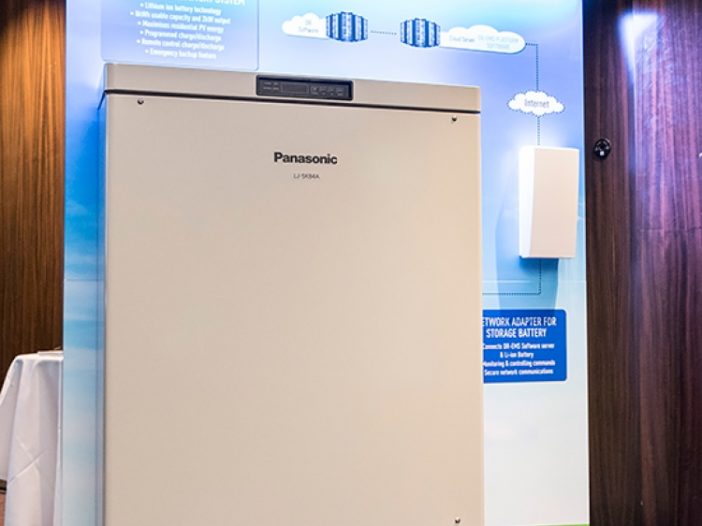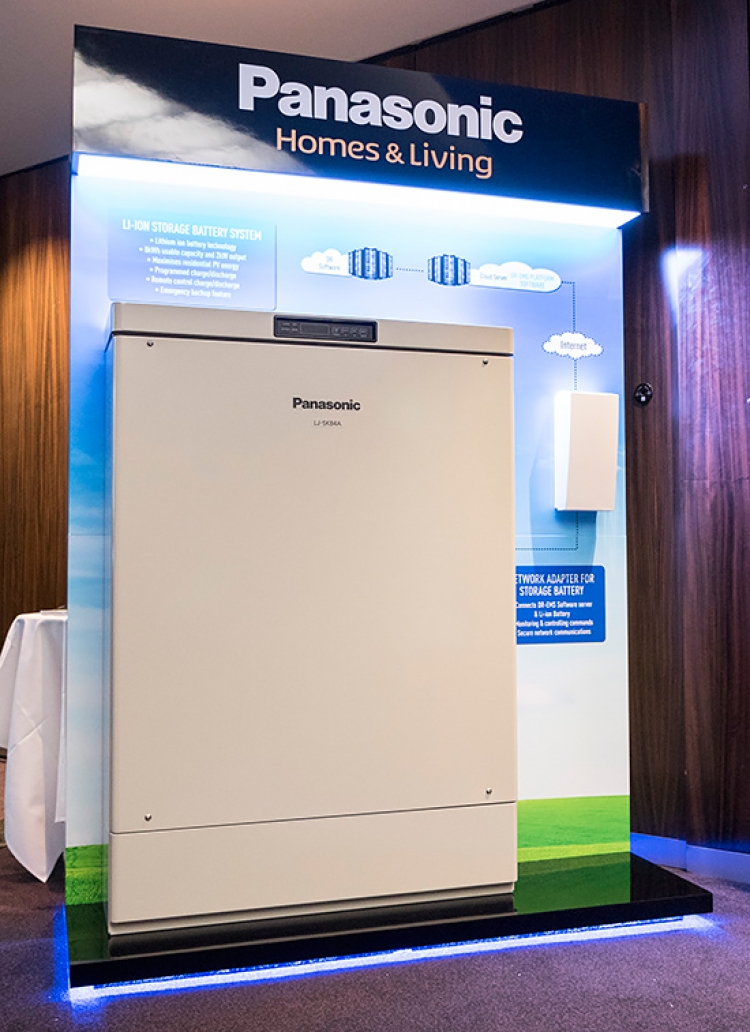
The first in a series of Australian residential solar plus storage trials conducted by Japanese tech giant Panasonic and a number of local utilities has kicked off in Canberra, with the installation of an 8kWh battery system alongside a 5.2kW PV array at the home of an ActewAGL employee in Forde.
As reported in the Canberra Times, the system was installed at the family home of Rachel Turner, who jumped at the chance to be involved in the trial through her work.
The trial, announced in June, aims to test the Panasonic battery, which the company says was designed specifically for the Australian market, to be paired with solar arrays of around 5kW.
Panasonic said the system should help solar households double their rates of solar self consumption from around 30 per cent to 60 per cent, by storing excess solar output during the day for use later.
This, it says, will provide “a reliable, efficient base load for solar installed households during peak periods”.
According to ActewAGL’s Turner, first 15 systems to be installed in Canberra would be worth $15,000 each.
Turner also described the as a real game-changer.
“We have an eight kilowatt hour battery,” she said. “That is enough to run our airconditioner, lights, oven, television and whatever else is needed,” she told the Canberra Times.
As we wrote here, the Panasonic’s battery storage offering is just one among a growing number that are either already available in Australia, or targeted at the market and coming soon.
Last week, Tesla announced the first three Australian authorised resellers of its highly coveted Powerwall battery, installations of which are expected to begin in the new year.
But unlike Tesla, Panasonic is looking to sell its battery storage product only through retailers and network operators, including ActewAGL.
In June, Panasonic Australia managing director told RenewEconomy that the 8kWh system would include demand response technology and remote charge and discharge programs, which could be used by retailers and network operators.
For instance, he said, the use of a utility’s server could aggregate up to 20,000 individual solar systems, or provide a total of 40MW capacity to deal with loads at peak time.
“There is potential for them to access large volumes of energy at any particular time,” he said.
“The consumer is central to this, but if we can deliver a win, win, win situation – a win to the consumer, a win to the network, and a win to the retailer, this will be a different proposition to other off the shelf products,” he said.
ActewAGL chief executive Michael Costello told the Canberra Times that the utility wanted to see how the new technology worked with its network.
“While the grid will still play an important role in the supply of electricity, we believe the battery storage industry will continue to grow over the next few years as the technology continues to advance,” he said.
“We know the ACT community has a high awareness of climate change and the introduction of battery storage will increasingly have a positive impact on the ACT’s renewable energy targets.”

Sophie is editor of One Step Off The Grid and deputy editor of its sister site, Renew Economy. Sophie has been writing about clean energy for more than a decade.



